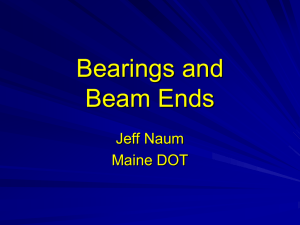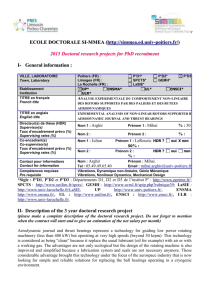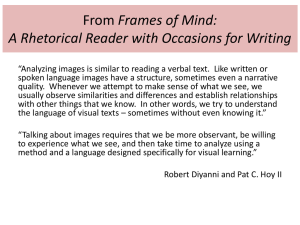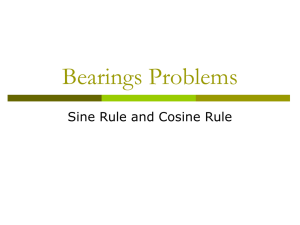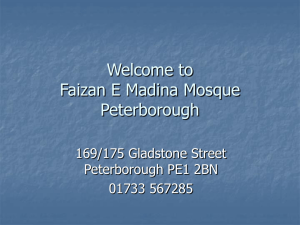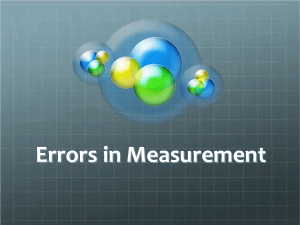MAP READING AND BASIC TECHNIQUES
advertisement
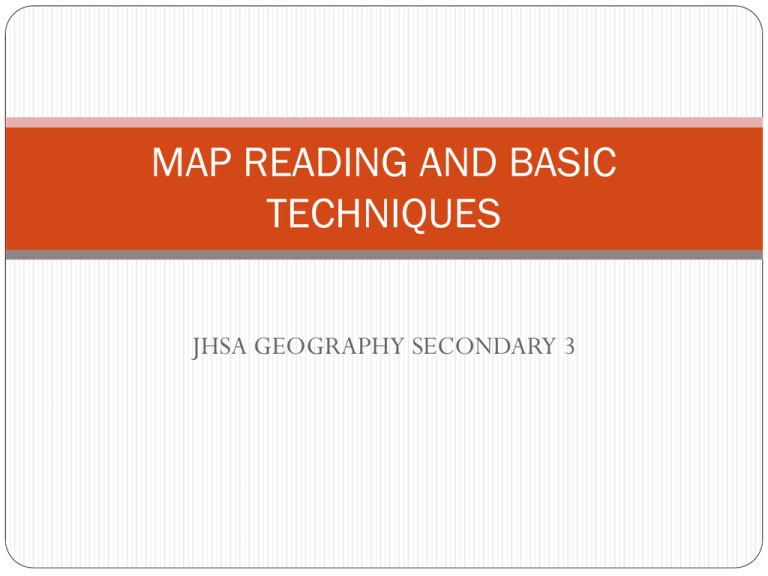
MAP READING AND BASIC TECHNIQUES JHSA GEOGRAPHY SECONDARY 3 MAP READING 1. Interpreting symbols 2. Specifying locations 3. Determining direction 4. Measuring distances 5. Representing heights 6. Interpreting human activities from topographical map INTERPRETING SYMBOLS What is symbols? Symbols in a map represent the actual features found on the earth’s surface. Types of symbols 1. Abbreviation 2. Area 3. Height 4. Line 5. Point 65 336 N 64 63 62 61 60 59 14 15 16 LEGEND plantation 18 19 20 21 1 centimetre represents 5 kilometres Ring road Rubber 17 Forest 5 10 Contour Road Settlement Bridge School Mosque Hospital SPECIFYING LOCATIONS Grid references describe the location of the feature on topographical map. The vertical and horizontal lines divide the map into grid square. 1. Four figure – describe the location of a large features; lake. 2. Six figure – describe the exact location of the features. 65 336 N 64 NORTHINGS 63 62 61 60 EASTINGS 59 14 15 LEGEND 16 17 18 19 1 centimetre represents 5 kilometres 20 21 QUIZ #1 What is four figure grid reference for: Tanarata Laketown Resort Mosque in Tanarata town Hospital What is six figure grid reference for: School in Tanarata Town Mosque in Tanarata Town School in Pekan Gring ANSWERS What is four figure grid reference for: Tanarata Laketown Resort – 17 61 Tanarata town – 15 60 Hospital – 14 63 What is six figure grid reference for: School in Tanarata Town – 152608 Mosque in Tanarata Town – 158 602 School in Pekan Gring – 158 618 DETERMINING DIRECTION 1. Compass points 2. North Points 3. Bearings COMPASS POINTS NNW NNE NORTH WEST NORTH EAST WNW ENE WEST EAST ESE WSW SOUTH EAST SOUTH WEST SSW SOUTH SSE NORTH POINTS 1. TRUE NORTH GN 2. MAGNETIC NORTH 3. GRID NORTH TN MN Using compass directions Give directions to the boatman to steer his way out of the jetty to reach the island. west east east N north E W S north west What problem do you think can happen if we use this method of giving directions? Lacks accuracy COMPASS BEARINGS 0° 360 ° NNW NNE 315 ° NORTH EAST NORTH WEST WNW 270 ° 45 ° ENE 90 ° EAST WEST ESE WSW SOUTH EAST SOUTH WEST 135 ° 225 ° SSW SSE SOUTH 180 ° What is the direction of the dam from Upper Mandai II? Northeast North North Southeast What is the direction of the school from the pier? To find the bearings of (Y) from (X) For bearings from less than 180 ° Draw the North line that is parallel to the eastings on the map From X Read bearings in the clockwise direction Y 0° Draw a line to join X and Y X 90° Align protractor along the North Line with 0° corresponding to North 180° To find the bearings of (Y) from (X) For bearings more than 180 ° Draw the North line that is parallel to the eastings on the map From X Read bearings in the anti-clockwise direction, then subtract from 360° 0° Y Draw a line to join X and Y X 90° Align protractor along the North Line with 0° corresponding to North 180° What is the bearing of the school from Upper Mandai II? What is the bearing of Upper Mandai II from the school? MEASURING DISTANCES Scale is used to calculate distances between features on a map Three ways of showing a scale on a map: 1. Statement in words 2. Representative fraction (R.F) 3. Linear Scale 65 336 N 64 63 62 61 60 59 14 15 16 LEGEND plantation 18 19 20 21 1 centimetre represents 5 kilometres Ring road Rubber 17 Forest 5 10 Contour Road Settlement Bridge School Mosque Hospital REPRESENTING HEIGHT SPOT HEIGHT ( ) Indicates the specific height of a point on a map. BENCH MARK ( 100M) Indicates height of the place above sea level. TRIGONOMETRICAL STATION ( 50) Usually found on the hilltops or mountain peaks. 65 336 N 64 TRIGONOMETRICAL STATION 63 SPOT HIGHT 62 61 60 59 14 15 16 LEGEND plantation 18 19 20 21 1 centimetre represents 5 kilometres Ring road Rubber 17 Forest 5 10 Contour Road Settlement Bridge School Mosque Hospital CONTOURS Imaginary lines joining places of the same height above sea level. The height of each contours usually marked on the line. Vertical interval help us to find the value of the line of the contours. EARTH OUR HOME PAGE 18 - 20 CALCULATING GRADIENT GRADIENT = 1. 2. VERTICAL DISTANCE HORIZONTAL DISTANCE FIND VERTICAL DISTANCE FROM A TO B. FIND HORIZONTAL DISTANCE FROM A TO B. B ANSWER:- 100 ___40m___ 20000m 80 _1_ 500 A 60 This means that the slope AB rises 1 m for every 500 m of horizontal distance. INTERPRETING HUMAN ACTIVITIES FROM TOPOGRAPHICAL MAP Settlement patterns Transport patterns QUIZ #3 SETTLEMENT PATTERNS DISPERSED SETTLEMENTS NUCLEATED SETTLEMENTS LINEAR SETTLEMENTS TRANSPORTATION PATTERNS (EXAMPLES) HUMAN ACTIVITIES BASIC TECHNIQUES INTERPRETING PHOTOGRAPH TYPES OF PHOTOGRAPH STEPS TO INTERPRET SKETCHING A PHOTOGRAPH TYPES OF PHOTOGRAPH LANDSCAPE 2. AERIAL 3. SETELLITE IMAGES 1. QUIZ #3 Each group will discuss on the steps to interpret a photograph. Choose any types of photograph and explain the photography using the steps that you have discussed.
